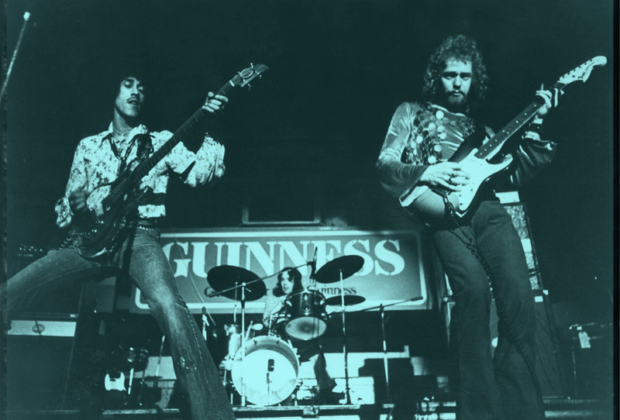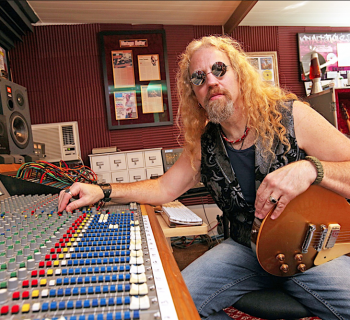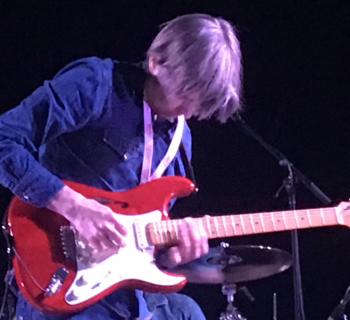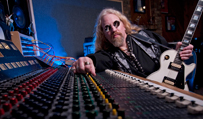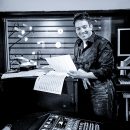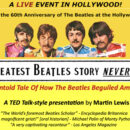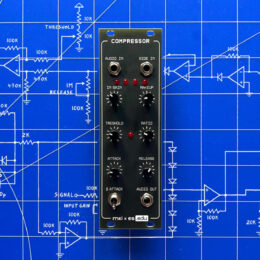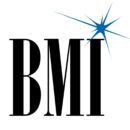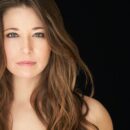The Irish band Thin Lizzy was renowned for their extraordinary guitarist, Eric Bell. Much like the Yardbirds in the ‘60s, Thin Lizzy showcased many talented guitarists, such as Gary Moore, Scott Gorham, Brian Robertson, Snowy White and John Sykes. Born in East Belfast, Northern Ireland, Bell was one of the founding members of Thin Lizzy and had performed in the mid-‘60s with such bands as Them, Van Morrison, Shades of Blue, the Earth Dwellers, the Bluebeats and the Irish showband the Dreams.
The magical musical year of 1969 brought Eric together with Phil Lynott (lead vocals, bass), Eric Wrixon (organist) and Brian Downey (drummer) in a chance meeting at the Countdown Club in Dublin. Bell creatively named the band Thin Lizzy, after Tin Lizzy, a robot bird in The Dandy kids comic. The Dandy was one of the top comic books in the U.K., along with The Beano. If you take a closer look at the groundbreaking 1966 John Mayall & The Bluesbreakers album cover, you will see a young Eric Clapton reading a Beano comic.
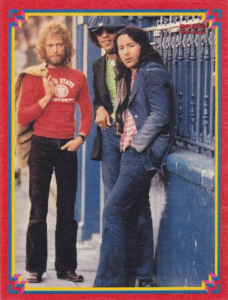 In 1971 Thin Lizzy received a record deal from Decca Records and relocated to London. They released their first three albums: Thin Lizzy, Shades of a Blue Orphanage and Vagabonds of the Western World. Decca released their hit single "Whiskey in the Jar," a remake of a traditional Irish song. Eric Bell co-wrote many of the songs with Phil Lynott, including “The Rocker” and “Ray Gunn.” Then, in 1973 at a New Year’s show, Bell famously left the band as he dramatically threw his guitar into the air and pushed the amplifiers into the audience during the concert. After leaving Thin Lizzy, Bell went on to a solo career and an interesting stint with Noel Redding, bass player from the Jimi Hendrix Experience.
In 1971 Thin Lizzy received a record deal from Decca Records and relocated to London. They released their first three albums: Thin Lizzy, Shades of a Blue Orphanage and Vagabonds of the Western World. Decca released their hit single "Whiskey in the Jar," a remake of a traditional Irish song. Eric Bell co-wrote many of the songs with Phil Lynott, including “The Rocker” and “Ray Gunn.” Then, in 1973 at a New Year’s show, Bell famously left the band as he dramatically threw his guitar into the air and pushed the amplifiers into the audience during the concert. After leaving Thin Lizzy, Bell went on to a solo career and an interesting stint with Noel Redding, bass player from the Jimi Hendrix Experience.
I had the pleasure of interviewing Eric Bell to see his guitar influences and how he embarked on his enriched musical journey.
Tell us about how you started playing guitar and who were your big influences?
I got a plastic guitar one Christmas when I was about 12 years old, but it was pretty good. It had six different colored strings and really good little frets. It was midway between a toy and a real guitar and about a third of the size of a real guitar. I learned to play the "Harry Lime" on the first string. My first influence was Hank Marvin from the Shadows. The Shadows blew my mind when I first heard them, and I still love listening to them. Hank was definitely the first real guitar hero in Britain. I think he's the only guitar player who got the sound and tone out of a Stratocaster that matched the way it looked.
What bands were you in before Thin Lizzy?
I was in a few groups that started with some mates when I was going to Orangefield School––The Atlantics, The Deltones––and I played with three different Irish showbands. I turned professional when I was around 17 and went to live in Glasgow with the Bluebeats Showband from Belfast. Then I played with the Shannon Showband that was based in Leeds. A few years later I joined the Dreams Showband in Dublin. I also played in Van Morrison's band called Van Morrison and Them Again. I only played about seven gigs with them and left after a drunken night playing in Queen's University, Belfast.
I’ve always been a huge fan of Thin Lizzy! As a co-founder of the band, how did it come about that you teamed up with Phil Lynott?
I left the Dreams Showband after playing with them for nearly two years. This was because I had gone to a club in Dublin and saw a group called Skid Row. My friend Gary Moore, who I hadn't seen for a few years, was playing guitar with them. Skid Row was amazing, playing amazing arrangements at amazing speed. I left the Dreams about four months later.
On my nights off from playing, I would go around Dublin looking for musicians to form a three-piece band. Nobody was interested. Then one night I went to Countdown Club and a group called Orphanage was playing. Philip Lynott was singing, and Brian Downey was on drums. I spoke with them during their break and we decided to get together to have a jam. It all worked out.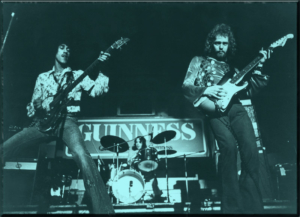
The first three albums–Thin Lizzy, Shades of a Blue Orphanage and Vagabonds of the Western World–had some great, memorable songs like “Ray Gunn,” “The Rise,” “Dear Demise of the Funky Nomadic Tribes,” and “The Rocker.” Did you write all of these songs with Phil?
Both myself and Brian Downey worked really hard on the songs with Philip. Sometimes at rehearsals Philip and myself would work on a very basic idea that Phil had, and I would be trying and experimenting everything I knew on guitar, until we hit on an idea that worked. The same with Brian. He and Philip would work on a part of a song sometimes around 45 minutes and I’d be sitting in the corner reading Melody Maker.
What funny story can you tell Thin Lizzy fans that happened to you and the band in ‘70s?
We were driving home after a gig in Wales and our driver Charlie got tired and wanted to take a rest and pulled on to the side of the road. A half hour passed, and it started to get very cold.
I thought I might as well drive, as we were on the motorway for a straight line for about 40 miles. I ended up in the driving seat and after lots of judders got the van moving. Everyone was cool about it except Philip. "Hey Eric, can you drive?" I'd only driven in a garage where I had worked for a while, but never on a main road. We carried on for about 10 minutes, not a car in sight. Then up ahead was a police car and they pulled us up and Charlie gave me his driver’s license. One with no photo in it. The police told me I was too tired to drive (I was very stoned) and gave me a ticket. Why they didn't search the van, and us as well, I’ll never know as we all looked pretty weird.
I always thought Noel Redding was a great bass player, how was your experience in his band? Did you have any creative freedom?
At the start of the Noel Redding Band, I must have left about four times. I didn't like Noel at that point or the music we were playing. Noel would get really stoned and drunk and become a pain in the bollocks. The reason I stayed was I heard from our manager we were going to do an 11-week tour of America. I’d never been there and wanted to see what it was like. I must mention...when we were in America, Noel became much more relaxed and was a really nice guy and we became close friends. Being creative in the band, I found very hard as it wasn’t a three-piece. It had keyboards played by Dave Clarke who wrote most of the songs. I couldn't find a natural way to play, as everything was very worked out, so I couldn't take off.
What is your gear set-up: guitars, amplifiers and pedals?
My set-up on stage is very basic now...my Strat, which I bought in 1971, through a Fender De Ville amp and a Boss Blues Driver. That’s it.
What are your current solo projects?
For about five years I’ve played a blues gig in England. The guy who ran it was Andy Quinn and asked me if I would be interested recording an album. I recorded one, which is called Exile, and a year later recorded another one, Standing at a Bus Stop. I was supposed to record a third album this September, but the freaking virus has put a hold on that, so I'll just have to wait and see what happens. •
BRIAN TARQUIN is the winner of multiple Emmy Awards, having established himself as a top-rate TV composer/guitarist. In 2006, SESAC honored him with the Network Television Performance Award. In addition, Tarquin has produced and composed the Guitar Masters series, trading licks with such guitar greats as Leslie West, Steve Morse, Billy Sheehan, Frank Gambale, Andy Timmons, Chris Poland (Megadeth) and Hal Lindes (Dire Straits). For further information, visit briantarquin.com.

